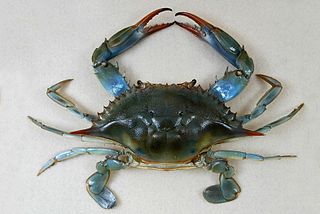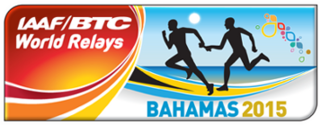
The Antilles is an archipelago bordered by the Caribbean Sea to the south and west, the Gulf of Mexico to the northwest, and the Atlantic Ocean to the north and east.

The Leeward Islands are a group of islands situated where the northeastern Caribbean Sea meets the western Atlantic Ocean. Starting with the Virgin Islands east of Puerto Rico, they extend southeast to Guadeloupe and its dependencies. In English, the term Leeward Islands refers to the northern islands of the Lesser Antilles chain. The more southerly part of this chain, starting with Dominica, is called the Windward Islands. Dominica was originally considered a part of the Leeward Islands, but was transferred from the British Leeward Islands to the British Windward Islands in 1940.

The Greater Antilles is a grouping of the larger islands in the Caribbean Sea, including Cuba, Hispaniola, Puerto Rico, Jamaica, Navassa Island and the Cayman Islands. Six island states share the region of the Greater Antilles, with Haiti and the Dominican Republic sharing the island of Hispaniola. Together with the Lesser Antilles, they make up the Antilles.

Remipedia is a class of blind crustaceans, closely related to hexapods, found in coastal aquifers which contain saline groundwater, with populations identified in almost every ocean basin so far explored, including in Australia, the Caribbean Sea, and the Atlantic Ocean. The first described remipede was the fossil Tesnusocaris goldichi. Since 1979, at least seventeen living species have been identified in subtropical regions around the world.

The superorder Peracarida is a large group of malacostracan crustaceans, having members in marine, freshwater, and terrestrial habitats. They are chiefly defined by the presence of a brood pouch, or marsupium, formed from thin flattened plates (oostegites) borne on the basalmost segments of the legs. Peracarida is one of the largest crustacean taxa and includes about 12,000 species. Most members are less than 2 cm (0.8 in) in length, but the largest is probably the giant isopod which can reach 76 cm (30 in). The earliest known perecaridian was Oxyuropoda ligioides, a fossil of which has been found dating to the Late Devonian of Ireland.
The 1994 World Junior Championships in Athletics were held in Lisbon, the capital city of Portugal, on July 20–24.

Eumalacostraca is a subclass of crustaceans, containing almost all living malacostracans, or about 40,000 described species. The remaining subclasses are the Phyllocarida and possibly the Hoplocarida. Eumalacostracans have 19 segments. This arrangement is known as the "caridoid facies", a term coined by William Thomas Calman in 1909. The thoracic limbs are jointed and used for swimming or walking. The common ancestor is thought to have had a carapace, and most living species possess one, but it has been lost in some subgroups.

The 1991 Pan American Games were held in Havana, Cuba from August 2 to August 18, 1991. There were 4,519 athletes from 39 countries of the PASO community, with events in 33 different sports. The main stadium was the Estadio Panamericano, a multi-use stadium in Havana that holds 50,000 people.

Miss Universe 1993, the 42nd Miss Universe pageant, was held on 21 May 1993 at the Auditorio Nacional in Mexico City, Mexico. At the event's conclusion, Dayanara Torres of Puerto Rico was crowned Miss Universe by outgoing titleholder Michelle McLean of Namibia. Seventy-nine contestants competed in the pageant.

Miss Universe 1990, the 39th Miss Universe pageant, held on April 15, 1990 at the Shubert Theatre in Los Angeles, California, United States.

Typhlatya is a genus of shrimp in the family Atyidae. These are small, stygobitic shrimp found in the West Mediterranean region, Caribbean region, Ascension Island and the Galápagos, although the individual species often have very small ranges. Species in this genus are found in salt, brackish and fresh waters, mostly in anchialine habitats and none in the open sea.
The Caribbean bioregion is a biogeographic region that includes the islands of the Caribbean Sea and nearby Atlantic islands, which share a fauna, flora and mycobiota distinct from surrounding bioregions.

The Caribbean is a subregion of the Americas that includes the Caribbean Sea and its islands, some of which are surrounded by the Caribbean Sea and some of which border both the Caribbean Sea and the North Atlantic Ocean; the nearby coastal areas on the mainland are often also included in the region. The region is southeast of the Gulf of Mexico and the North American mainland, east of Central America, and north of South America.
National records in athletics are the marks achieved by a nation's best athlete or athletes in a particular athletics event. These records are ratified by the respective national athletics governing body. A national record may also be the respective continental record (also called "area record", or even the world record in that event.

Gnathia is a genus of isopod crustaceans, containing the following species:

The 2014 IAAF World Relays were held in May 2014 in Nassau, Bahamas. The event was the first edition of the IAAF World Relays. There were five events for each gender. In men's and women's 4 × 100 metres and 4 × 400 metres, the event served as a qualification event for the 2015 World Championships in Athletics.

Xibalbanus tulumensis is a venomous, hermaphroditic crustacean found in anchialine caves on the Yucatán Peninsula in the Caribbean Sea. This blind remipede liquefies the body contents of other crustaceans with a venom similar to that of rattlesnakes, and which includes digestive enzymes and a paralysing toxin.

The 2015 IAAF World Relays was the second edition of the biennial, global track and field relay competition between nations. As in the previous year, it was held in May in Nassau, Bahamas. Apart from contesting for the Golden Baton for the best team overall, the competition also served as a qualifying stage for the 2016 Summer Olympics in the 4 × 100 and 4 × 400 metres relay. One major change compared to the inaugural edition was the replacement of the 4 × 1500 metres relay with the distance medley relay.
The men's 400 metres event at the 1988 World Junior Championships in Athletics was held in Sudbury, Ontario, Canada, at Laurentian University Stadium on 27, 28 and 29 July.
The following lists events that happened during 2022 in the Caribbean.















